RESEARCH
Introduction
We live by connecting the outside world with our own world through the brain.
However, the brain does not simply connect them, but it shows a great variety of changes depending on the external environment and one's own mental state, which have a great influence on our feelings and thoughts.
In order to elucidate the mystery of advanced and rich brain function expression, we conduct research toward elucidation of the flow of information in brain tissue and brain cells and the control mechanism by external environment and mental state.

Although it is a complicated brain like this, if you divide it into small pieces, there are innumerable cells in the brain, and they are largely divided into nerve cells and glial cells.
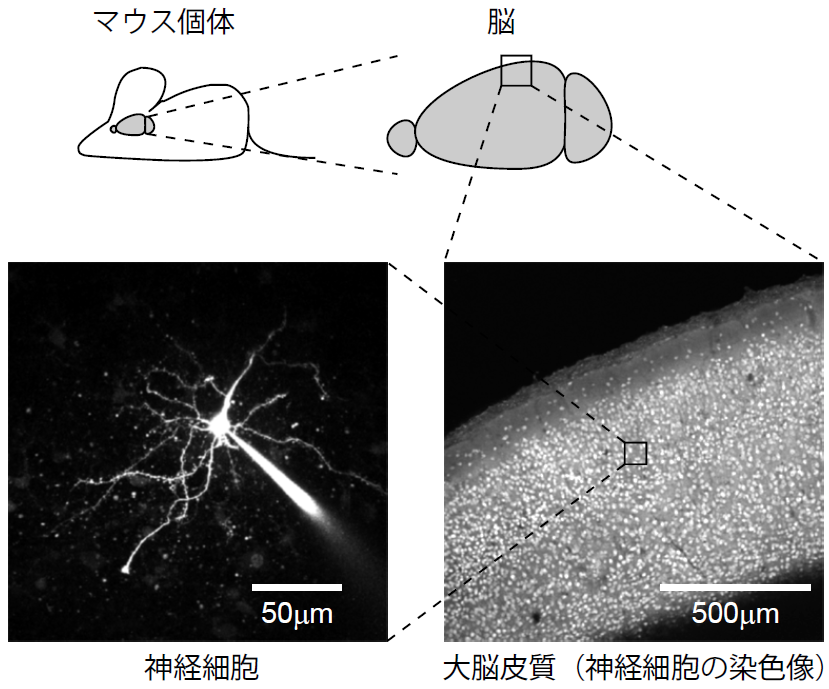
It is believed that these cells exchange very small chemical signaling substances, and this signaling supports the brain's information processing, which in turn supports the brain's higher-order and mental functions.
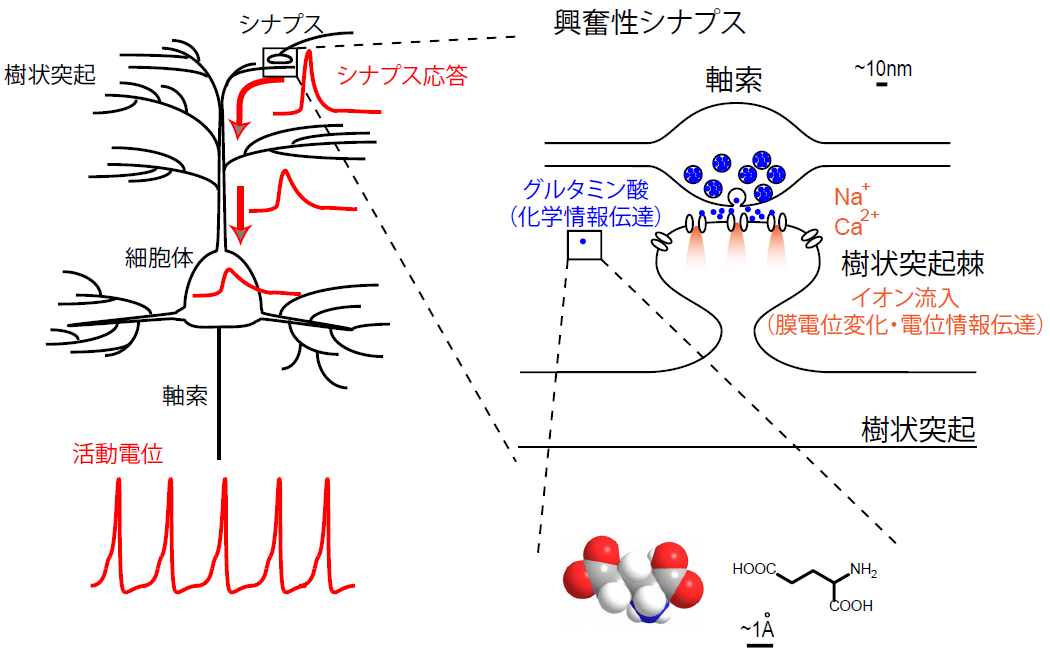
And, if changes in these transmissions occur, it leads to "normal" changes in brain and mental functions, or diseases, and various drugs are said to be effective by restoring those changes.
However, due to the fact that brain tissue is a very complicated and delicate tissue, and transmitters are very small substances, many aspects of the transmission have not yet been elucidated. .. We are advancing research to understand such difficult-to-observ phenomena by developing and applying new technologies, focusing on neuromodulators and glial cells.
1) Physiology/pathophysiology/pharmacology research of brain cells/tissues by developing and applying new imaging technology
In order to understand brain function, it is necessary to observe that function first.
Here, in order to understand the brain function as a tissue composed of a large number of nerve cells and glial cells, it is necessary to observe a three-dimensional tissue in which these networks are stored from a wide field of view.
On the other hand, individual cells of both nerve cells and glial cells have very complicated structures, and these structures play an important role in function expression, so it is also important to observe these fine structures.
Furthermore, the time domain of observation phenomena is extremely wide, from the recording of neural activity that occurs in milliseconds to the morphological changes that occur every year. A means of non-invasively observing the target across the area is needed.
The two-photon microscope is an excellent technology in these respects, and in fact, the introduction of the two-photon microscope has greatly advanced our knowledge of the brain.
By developing and applying this multiphoton microscopy technology, we are conducting research aimed at visualizing phenomena in the brain that no one has ever been able to see or measure, and to clarify the physiological functions of brain cells and tissues. I went. Currently, we are making use of this state-of-the-art imaging technology to visualize the flow of information in brain cells and tissues, and observe changes in the environment inside and outside of it, and we are advancing research into the mystery of brain function.
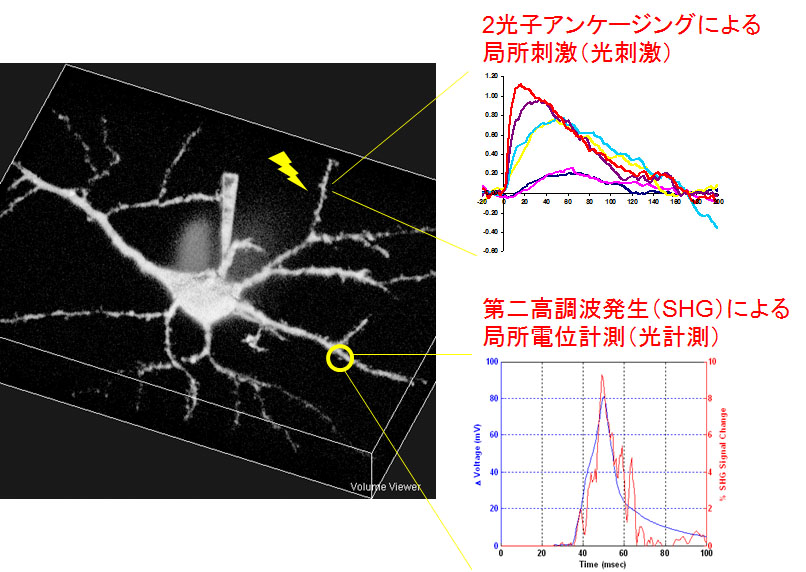
Second Harmonic Generation, SHG
SHG is a two-photon phenomenon that is not accompanied by excitation of a substance by absorption of light, and its generation requires special conditions for the target molecule. Therefore, by using this, it is possible to visualize a phenomenon different from fluorescence observation by two-photon excitation. For example, because collagen fibers can be observed without labeling with SHG, it is possible to visualize the structure of cancer tissues and blood vessels.
In addition, by observing SHG signals from the plasma membrane using a dye, we are able to quantitatively measure millisecond potential information in the details of nerve cells such as spines and axons, which have been difficult to measure up to now. Succeeded. In addition, we were the first in the world to succeed in the development and application of an SHG-specific dye specialized for SHG imaging. It is expected that the application of such technology will bring new knowledge that could not be obtained by fluorescence observation.
Research on SHG is being conducted as a joint research with Olympus Corporation.
The world's first SHG-dedicated dye developed by us is sold by Funakoshi Co., Ltd. and introduced.
We were interviewed by Funakoshi Co., Ltd. and introduced Ap3 in the interview.
We made a press release regarding the development and application of dyes for SHG.
This research was introduced as a microscope application note.
SHG research was introduced at Biogarage.
2) Elucidation of the information processing control mechanism of the brain focusing on neuromodulators and glial cells
When we talk about the brain, we mainly focus on nerve cells, but there are as many non-neuronal cells as there are nerve cells in brain tissue, and the main ones are glial cells. Astrocytes are a type of glial cell, which was once thought to be a passive cell that supports the activity of nerve cells, but in fact, it has become clear that it is a very active and important cell. Astrocytes are also connected in the brain like nerve cells make a network, but they are forming a huge network with analog in a different way from nerve cells.
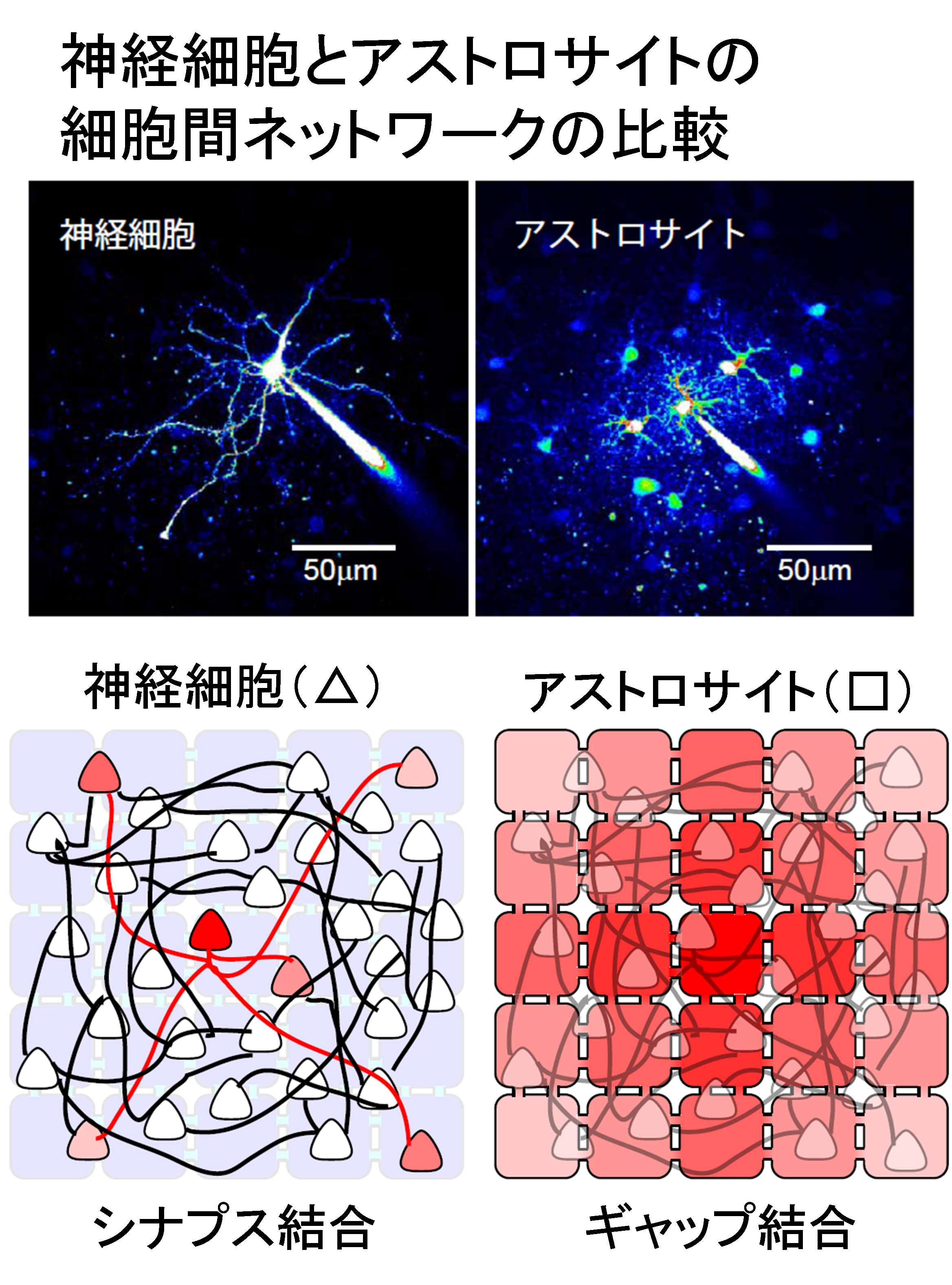
It was also found that astrocytes respond to chemical signaling substances exchanged by nerve cells and further release them, thus transmitting information. Furthermore, according to recent research including ours, various substances and drugs that have been thought to exert their effects by acting on nerve cells also act on astrocytes, which play an important role. I have also come to understand that. In particular, it was found that a group of neuromodulators such as noradrenaline, which has been strongly suggested to be related to mental functions, is a very important substance that controls astrocyte function, and we consider brain function and drug action. At times, it has become clear that astrocytes are as important cells as neurons.
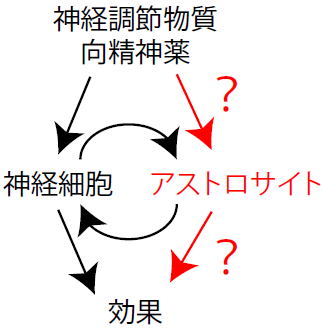
However, research on astrocytes is overwhelmingly small and delayed compared to nerve cells. Therefore, we are conducting research to understand various phenomena in the brain by focusing on astrocytes.